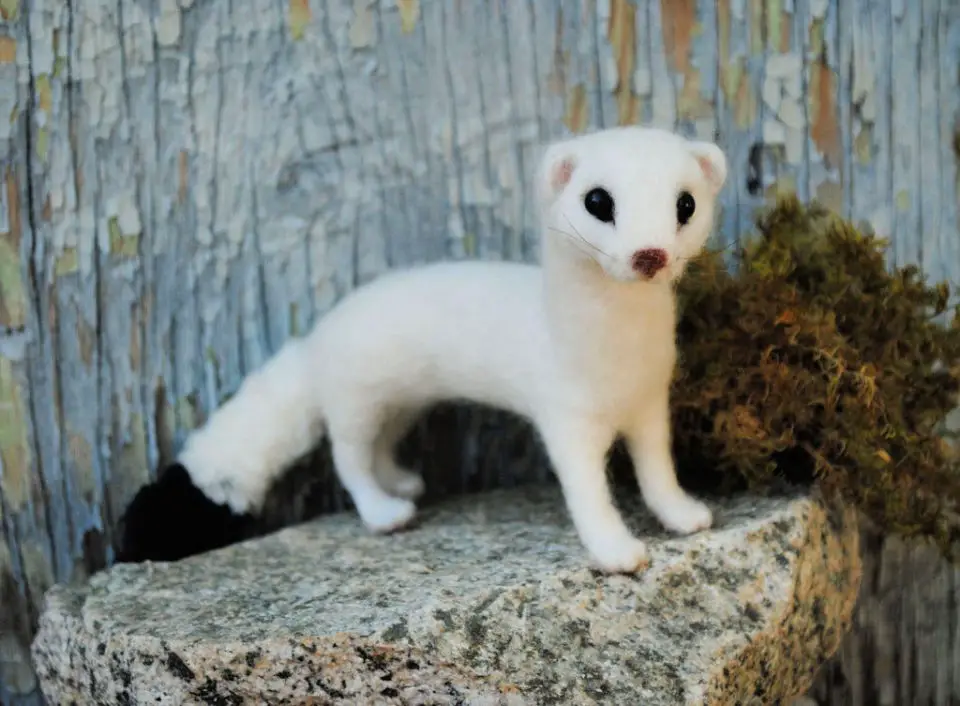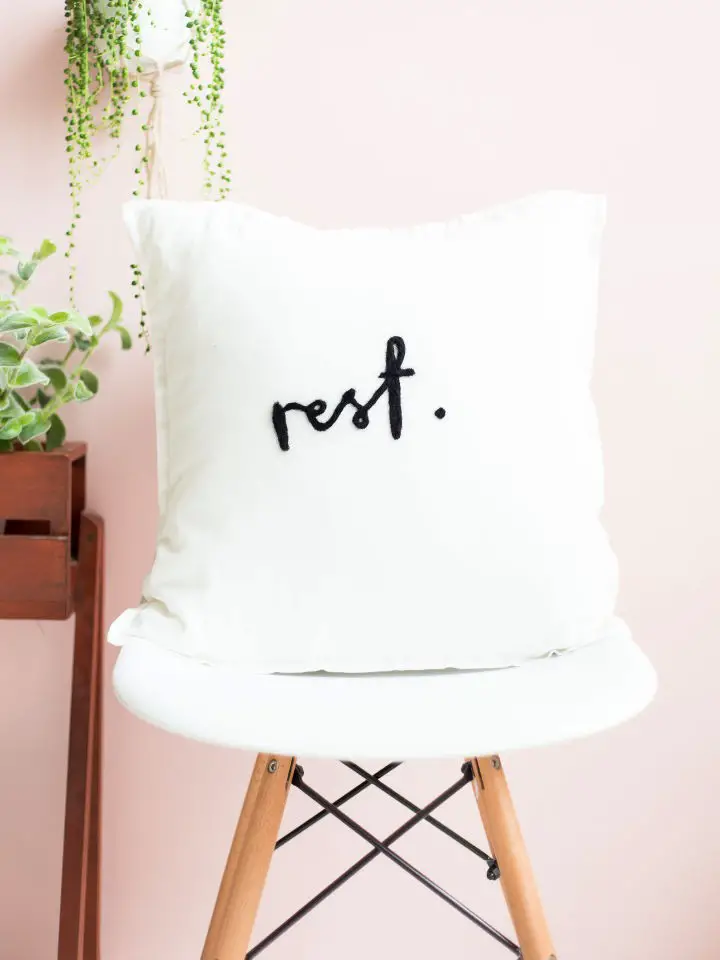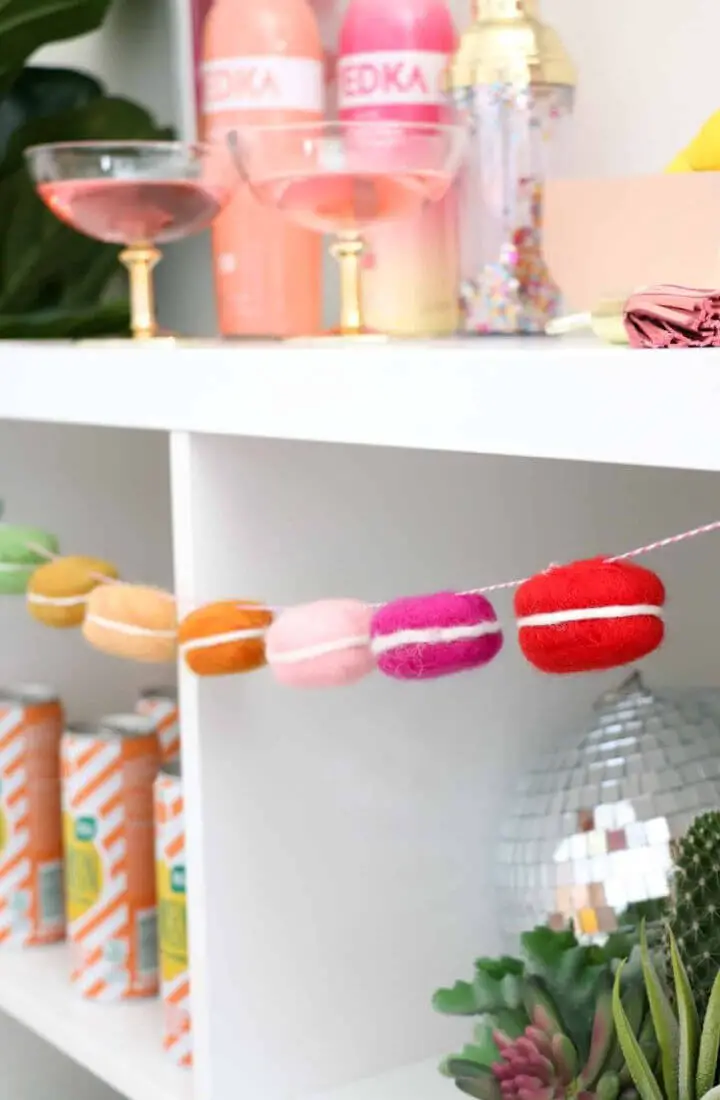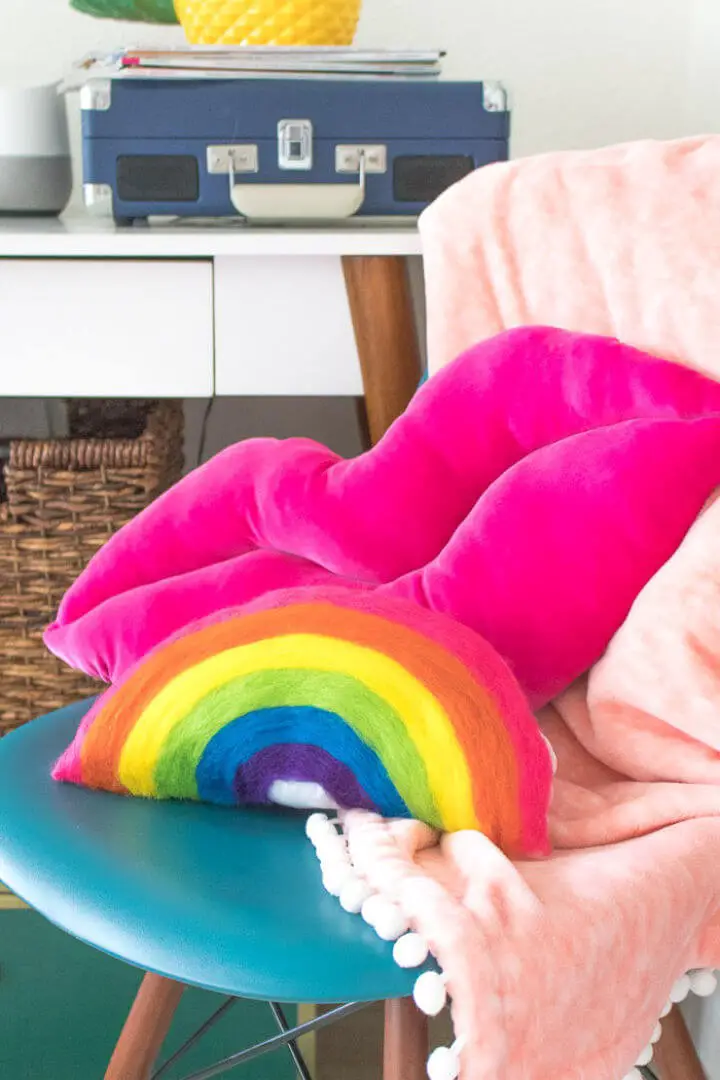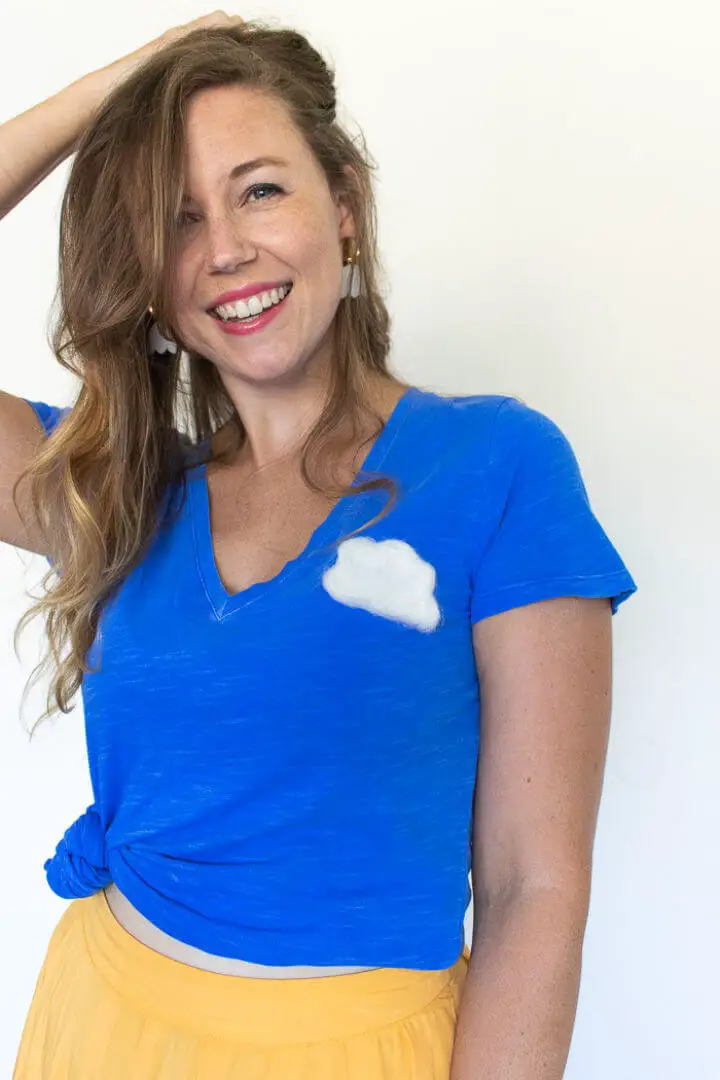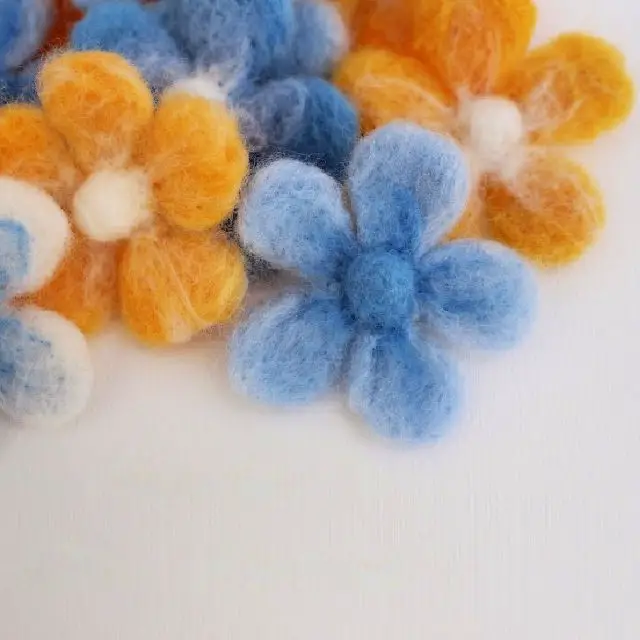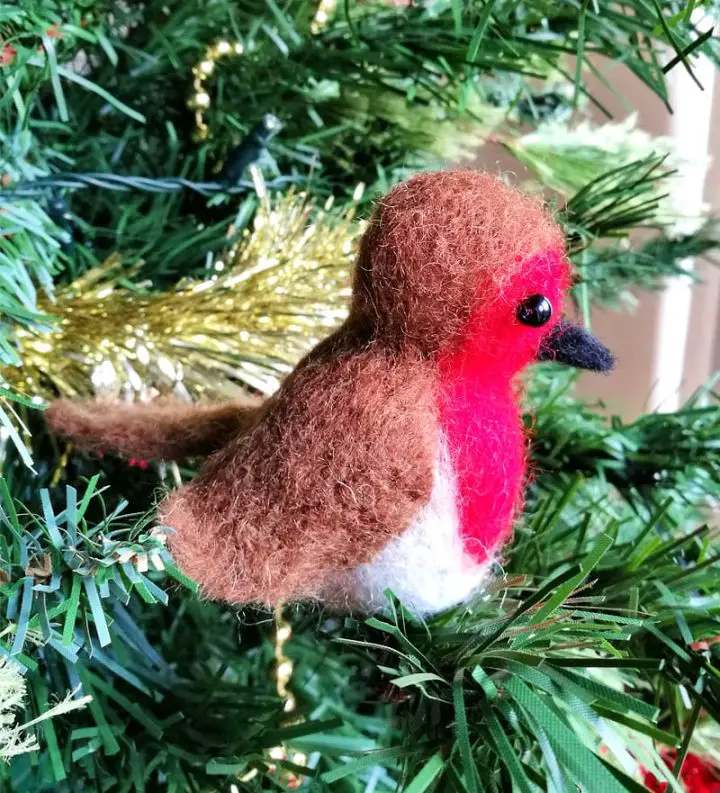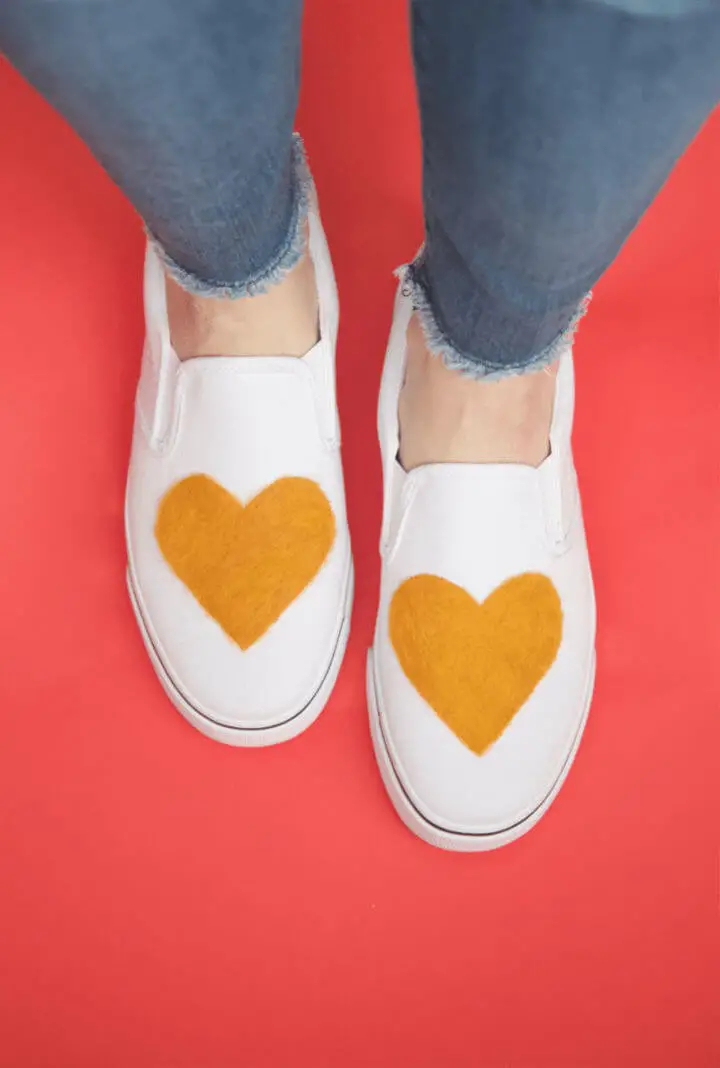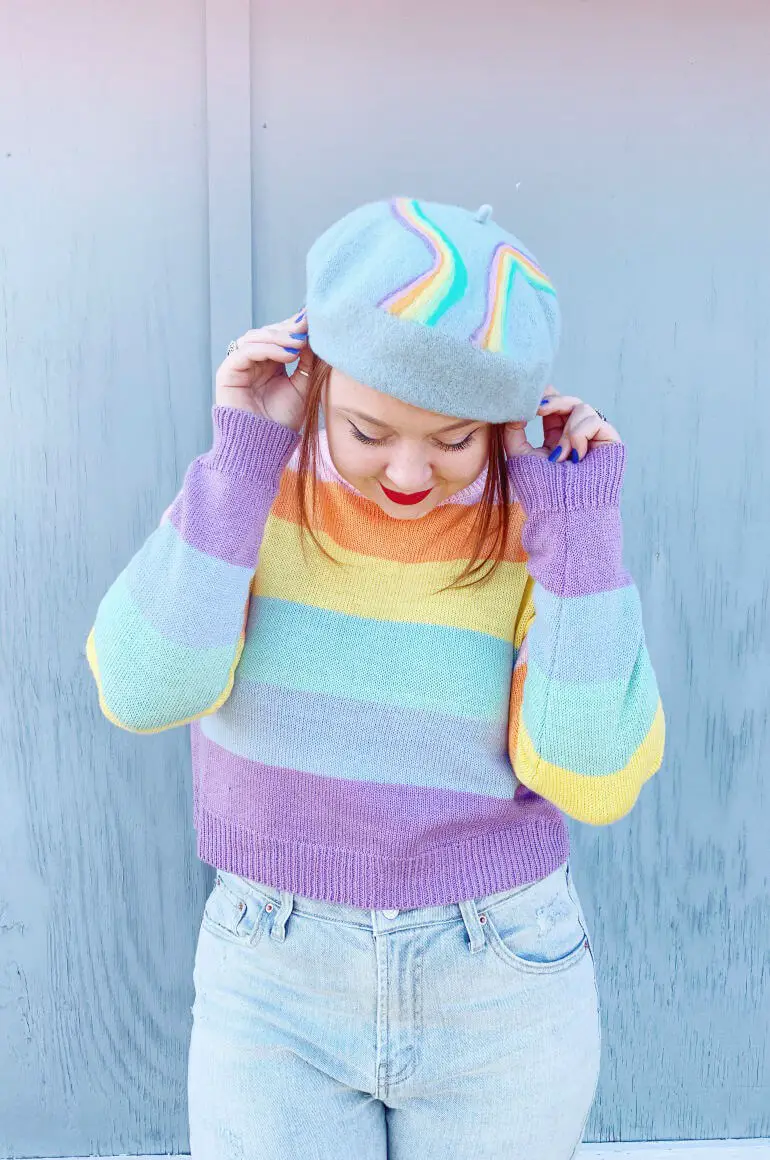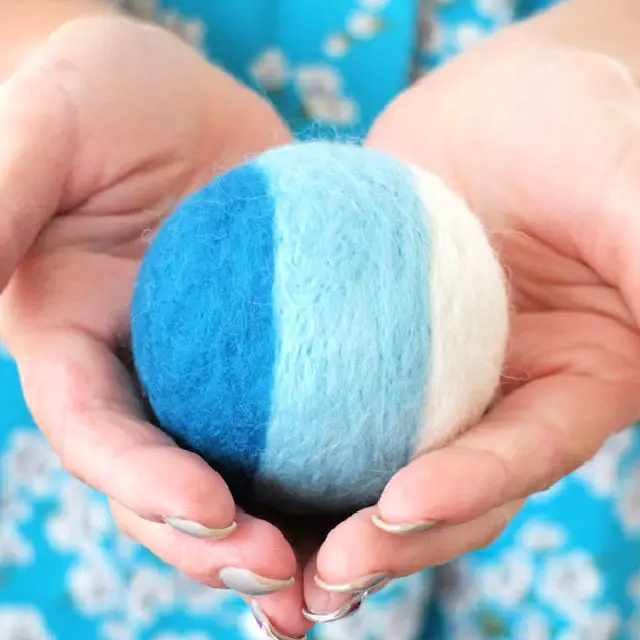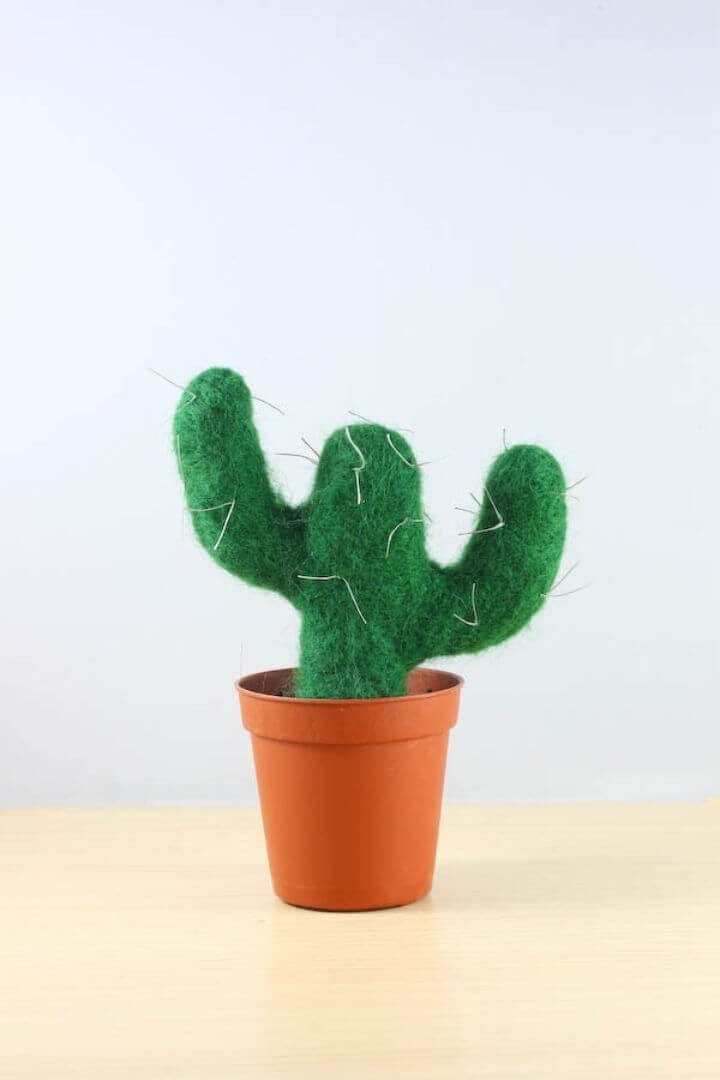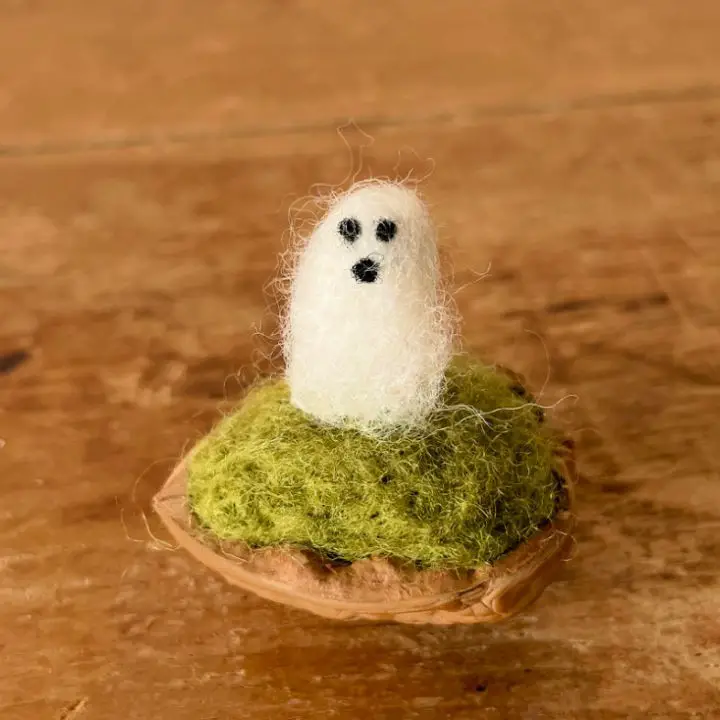
Needle felting is an art form that brings wool to life through the use of special barbed needles. This creative process allows crafters to shape and mold wool into various forms and figures, making it a captivating hobby for many. With its accessibility to all skill levels, needle felting offers a wide range of projects, from simple shapes to intricate and detailed works. As a popular choice among craft enthusiasts, it provides an excellent outlet for relaxation and creative expression.For newcomers, starting with 20 easy-to-follow needle-felting ideas is the best way to build confidence and understand the basics of handling wool and felting needles. This guide serves as an introduction to the origins of needle felting, its growing popularity, and the artistic potential it offers. As you progress, you’ll gain knowledge on how to get started, master basic and advanced techniques, and find solutions to common needle felting issues. Let’s begin your felting journey with the right foundation and inspiration.
Introduction to Needle Felting
Transforming wool into three-dimensional creations is just one of the many joys of needle felting. This unique craft combines artistry with patience as you coax loose fibers into intricate shapes and designs. The process begins by stabbing specially designed barbed needles into the wool, causing the scales on each fiber to tangle and bind together. As you continue to felt, the fibers gradually become more compact, eventually solidifying into a cohesive form that can take many different forms – from delicate embellishments to three-dimensional sculptures.
The Origins of Needle Felting
Needle felting, a technique that’s relatively modern compared to other forms of felting, has an intriguing history. Originating in the 1980s as an industrial process for producing items like filters and gaskets, it didn’t take long before creative minds recognized the artistic potential of this method. As a result, needle felting evolved into a beloved hobby among crafters worldwide, offering a unique outlet for self-expression and creativity.
Why Needle Felting Has Gained Popularity
Needle felting has gained widespread popularity due to its unique characteristics. Unlike wet felting, which requires water and soap, needle felting is a dry process that can be done virtually anywhere. This accessibility has contributed significantly to its appeal. Furthermore, the craft’s simplicity makes it an attractive option for beginners, as only basic tools and materials are required to get started. The versatility of needle felting also sets it apart, allowing artists and hobbyists alike to shape wool into intricate designs and figures with ease.
The Artistic Potential of Needle Felting
With its boundless creative potential, needle felting invites you to unleash your imagination and bring forth a wide range of artistic expressions. From whimsical characters to intricately detailed sculptures, the medium’s versatility knows no bounds. As a forgiving craft, needle felting allows for effortless corrections, making it an ideal pursuit for both newcomers and seasoned artisans alike. The tactile nature of the wool and the meditative process of felting can also prove to be a therapeutic and calming experience. Through this unique medium, you’re empowered to infuse your creations with personal style and creativity, resulting in one-of-a-kind handcrafted pieces that are perfect for gifting or adorning your home.
How to Get Started with Needle Felting
Needle felting is an enchanting art form that enables the creation of soft, cuddly sculptures, accessories, and ornaments from wool. With its simplicity and versatility, this craft is ideal for both newcomers and experienced makers seeking to express their creativity. If you’re captivated by the prospect of embarking on a needle felting journey, here’s a step-by-step guide to help you start your creative adventure.
Understand the Basics of Needle Felting
Using specialized, barbed needles, needle felting allows you to shape wool into a wide range of forms. As the needles intertwine the fibers, they create solid, three-dimensional structures that can be crafted into various shapes and designs. From flat, two-dimensional creations to intricate, three-dimensional figures like animals, flowers, or beloved characters, the possibilities are endless.
Gather Your Supplies
To start needle felting, you’ll need some essential tools and materials. First, gather a range of felting needles with barbs that help tangle wool – varying sizes will be useful for different details and stages of your project. For the material to shape, opt for wool roving in a few core colors, then expand your palette as needed. A felting pad is also crucial, providing a protective surface to work on, whether you choose foam pads or brush mats. While not mandatory, finger protectors are highly recommended to shield your fingers from any accidental stabs.
Start with Simple Projects
To kick-start your crochet journey, it’s essential to begin with a project that introduces you to the fundamental techniques. A great starting point is to create something simple yet engaging, such as: small balls which can be used as the foundation for various shapes; basic geometric forms like hearts or stars; or even flat felted designs like coasters. These straightforward projects will help you develop muscle memory and get comfortable with your hook and yarn, setting you up for future endeavors.
Learn the Basic Techniques
The foundation of most projects lies in mastering three fundamental techniques: shaping, joining, and detailing.
Shaping involves starting with a small amount of wool, rolling it into the desired shape, and then using a needle to repeatedly poke it, binding the fibers together and firming up the wool. This technique is crucial for establishing the overall form of your project.
Joining parts together, such as attaching ears to a head, requires overlapping the pieces and securing them with needle felting until they’re firmly attached. This technique enables you to create complex compositions by combining different elements.
Detailing involves using a finer needle to add small details or smooth out the surface of your project. This level of precision allows for subtle textures and embellishments that can elevate the overall appearance of your finished piece.
Practice Patience and Persistence
The world of needle felting is a journey marked by both triumph and perseverance. While it’s natural to feel discouraged by early projects that may not meet our lofty expectations, it’s crucial to remember that growth and improvement are gradual processes. As we hone our skills, we’ll inevitably encounter moments where our creations don’t quite turn out as envisioned – yet this is precisely the opportunity to refine our techniques and revel in the small victories along the way.
Stay Inspired
When seeking inspiration for needle-felting, don’t limit yourself to traditional sources. Instead, draw from the world around you, including natural landscapes, beloved cartoons, and even your favorite culinary delights. To cultivate this creative spark, keep a dedicated space for jotting down ideas – whether it’s a sketchbook or a Pinterest board – where you can store and revisit concepts that catch your eye.
Join the Community
As you embark on your needle felting adventure, you’ll find that online communities are a valuable resource for sharing your creations, seeking guidance, and discovering fresh inspiration. Popular platforms like Instagram, Reddit, and craft forums provide a hub for connecting with fellow felters and staying up-to-date on the latest trends and techniques.
As you continue to explore the world of needle felting, remember that every step you take is a journey forward in your crafting journey. Embrace the process, enjoy the creative freedom it offers, and revel in the unique, tactile beauty of each piece you bring to life.
Basic Techniques of Needle Felting
The world of needle felting is a realm where the humblest materials transform into breathtaking masterpieces, all through the gentle manipulation of a single needle. This deceptively straightforward craft conceals its own brand of magic within its simplicity.
Shaping
Start by taking a small quantity of wool and gently poking it with your needle in a repetitive motion. As you do this, the fibers will begin to tangle and bond together, resulting in a dense and firm material that can be shaped at will. Use your imagination to transform the fluffy wool into spheres, cubes, or any other form you desire, all while the needle continues to work its magic.
Attaching Parts
As you build upon your foundation, simply overlap a fresh section of wool onto the existing form. Then, use a needle to weave the two pieces together seamlessly. The natural fibers will intertwine, allowing your creation to expand gradually, one connected piece at a time.
Making Textures
Textures have the extraordinary ability to breathe life into your creations. By employing your trusty needle to craft intricate details such as lines, dimples, and even fur, you’re essentially ‘painting’ with yarn, carefully layering each stitch to add depth and character to your work.
Advanced Techniques in Needle Felting
Elevate your crafting skills by uncovering the intricacies of needle felting. Delve into a world of advanced techniques that will enable you to create intricate designs and master the art of capturing minute details, taking your projects to the next level.
Detailed Sculptures
When tackling intricate or delicate projects, it’s essential to adopt a measured approach. Break down the task into smaller, manageable components and focus on adding one detail at a time. By employing different needle sizes and taking your time, you’ll be able to achieve precision and accuracy that would otherwise be challenging to attain. The end result will be a stunning piece that showcases your skill and attention to detail.
Incorporating Colors and Textures
To create a visually striking color scheme, consider layering distinct wool fibers to achieve seamless blends. This can be achieved by carefully alternating between different types of yarns as you stitch, using the needle to guide the transition from one hue to another. By combining silky and coarse textures, you can also add depth and visual interest to your project. The result is a rich tapestry of color and texture that will make your finished piece truly unique.
Adding Embellishments
Transform the essence of your work with the subtle yet impactful additions of beads, sequins, or embroidery. These delicate embellishments can elevate your piece from ordinary to extraordinary, showcasing your one-of-a-kind style. As you master these skills, a floodgate of creativity will open up, allowing you to embark on an imaginative journey that’s as much about the process as it is the end result. Savor each stitch, each shape, and each sensation – it’s all part of the enchanting experience that needle felting has to offer.
Troubleshooting Common Needle Felting Issues
The intricate world of needle felting can be both thrilling and frustrating. While the end result is often satisfying, the process itself can be marred by setbacks. Fortunately, there are solutions to common problems that may arise. When things don’t go according to plan, knowing how to troubleshoot and fix issues can make all the difference.
Fixing Loose Fibers
When encountering loose or fuzzy fibers on your finished felted piece, it’s easy to get concerned. However, tackling this issue is relatively straightforward. Simply take a needle and gently coax those stray fibers back into position by carefully poking them with the needle. Be patient and work methodically around the affected area until the fibers integrate seamlessly, restoring the original texture and appearance.
Dealing with Broken Needles
When it comes to working with needles, it’s inevitable that some will break during the process. To minimize the risk of this happening, make sure you’re always working on a cushioned surface. This can help reduce the likelihood of needles snapping or breaking off prematurely. If a needle does happen to break, don’t panic! Simply remove any remaining pieces from your work and replace it with a new one. By taking these precautions, you’ll be able to continue working efficiently without interruptions.
Correcting Misshapen Parts
To refine the shape of an element within your project, simply re-shape it using the needle provided. If additional material is required to achieve the desired form, carefully add more wool as necessary. Continue to felt the piece until you are satisfied with its overall appearance.
Adjusting Density
When working with felted pieces, it’s common to encounter issues with density or softness. To address these concerns, a simple yet effective solution is to adjust the needle size. For excessively dense pieces, switching to a finer needle allows for more controlled and gentle manipulation of the fibers, ultimately achieving the desired texture. Conversely, adding more wool can help soften overly dense areas. By incorporating these techniques into your felting practice, you’ll find that patience and persistence are key to producing high-quality results.
Care and Maintenance of Needle Felting Tools and Creations
Properly caring for your needle felting tools and creations is crucial to maintaining their longevity and preserving their aesthetic appeal. To achieve this, follow these steps:
Caring for Needle Felted Items
When it comes to maintaining the appearance of your needle-felted creations, subtlety is key. Rather than handling them roughly, opt for gentle manipulation to prevent fibers from being pulled or stretched. Similarly, when cleaning, avoid aggressive methods in favor of a soft touch – a gentle tap or a soft-bristled brush can work wonders. For items that are subjected to more wear and tear, such as jewelry or keychains, periodic repairs using a felting needle may be necessary to keep them looking their best.
Maintaining Felting Needles
The importance of felting needles cannot be overstated. To ensure their longevity and prevent damage, it’s essential to store them in a padded container that protects them from scratches and bends. Moreover, dull felting needles can cause discomfort and strain when working with the wool, which may ultimately affect the overall quality of your finished project. As such, it’s crucial to replace them promptly if they become worn out.
Storing Wool
To maintain the integrity of wool fibers, it’s crucial to keep them dry and pest-free. For optimal storage, utilize sealed containers or bags and place them in a cool, dark environment. This simple step helps prevent fading and effectively deters moth infestations.
Cleaning Felting Pads
To maintain the effectiveness of felting pads, it’s essential to regularly remove wool fibers that accumulate over time. As these fibers can become compacted, clearing them away ensures the pad continues to perform optimally for needle-felting purposes. By following this straightforward maintenance routine, you’ll be able to enjoy a seamless and fulfilling needle-felting experience, allowing your creations to withstand the passage of time.
FAQs About Needle Felting
The world of needle felting offers a unique creative outlet, allowing crafters to bring three-dimensional objects and artistic expressions to life using wool as the primary medium. To cater to both newcomers and seasoned experts alike, this section addresses frequently asked questions, providing valuable insights and guidance for those looking to explore or further develop their skills in this captivating craft.
What is Needle Felting?
Needle felting is a unique crafting technique that employs a distinctive, barbed needle to intertwine wool fibers, creating a densely textured, three-dimensional fabric. This intricate process is commonly utilized to produce ornamental items, playful toys, and visually striking artworks.
Do Felting Needles Wear Out?
While felting needles are designed to withstand the rigors of shaping and matting wool fibers, they’re not immune to degradation. With repeated use, their tips can gradually become dulled, increasing the risk of breakage. To avoid costly mistakes or frustrating delays in your project, it’s prudent to maintain a small stash of spare needles, ensuring you’re always prepared for unexpected setbacks.
What Age is Suitable for Children to Start Needle Felting?
While needle felting can be a fantastic hobby for crafty kids, it’s generally recommended for children aged 10 and above due to the inherent risks involved with handling sharp needles.
How Much Wool Do I Need for a Project?
When determining the quantity of wool needed for your project, it’s essential to consider two crucial factors: size and density. The former refers to the overall dimensions of the finished piece, while the latter pertains to its thickness or compactness. For instance, a tiny beaded ornament might require only a few grams of yarn, whereas a larger, more intricate design will necessitate a significantly greater amount. Understanding these variables is key to accurately calculating the wool requirements for your project.
How Do I Insert the Needle into a Single Needle Tool?
To initiate the felting process, carefully insert the needle into the specialized holding mechanism, following the manufacturer’s guidelines to ensure a secure fit. Confirm that the needle is properly seated and won’t shift during the felting process.
Can I Use Any Type of Wool for Needle Felting?
When it comes to choosing the right type of wool for your spinning or crafting project, many beginners opt for wool roving because of its user-friendly nature. Despite being one of many options available, wool roving’s simplicity makes it an attractive choice for those just starting out.
What’s the Difference Between Wet Felting and Needle Felting?
In contrast, two primary techniques exist for felting: wet felting and needle felting. Wet felting relies on a combination of water and mechanical manipulation to bond fibers together, whereas needle felting employs specialized barbed needles to physically entwine the fibers, creating a strong and durable material.
Can I Needle Felt with Pet Fur?
While it’s absolutely possible to utilize pet fur for needle felting, it’s essential to acknowledge that not all types of fur have the same ease of felting as wool. When working with pet fur, you’ll need to consider its specific characteristics and adjust your techniques accordingly.
How Do I Care for My Needle Felted Creations?
To preserve the longevity of your items, it’s essential to store them in a dry environment, shielded from direct sunlight. When cleaning is necessary, opt for gentle methods that won’t cause damage. A soft-bristled brush or microfiber cloth are ideal tools for this task.
Where Can I Find Needle Felting Patterns and Inspiration?
With an abundance of online resources, books, and community forums dedicated to needle felting at your fingertips, you’ll find no shortage of patterns and inspiration to spark your creativity. As with any skill, practice is key – and the best part? It’s a journey that allows for experimentation and mistakes, which are all valuable stepping stones in the learning process.
20 Easy Needle Felting Ideas for Beginners
Unleash your creative potential by exploring these 20 accessible needle felting projects perfect for beginners. Follow along with easy-to-follow guides and bring your imagination to life in the form of charming, handmade felted creations.
Realistic DIY Needle Felting Animals
Embark on a journey to create lifelike animals using needle felting techniques as outlined in an Instructables guide. The comprehensive tutorial takes you through the process of crafting a realistic ermine, from designing a wire armature to adding fine details with wool roving and merino. As you work through this project, which can take 15-20 hours or more, you’ll hone your skills in shaping, layering, and detailing, ultimately producing stunning animal sculptures that showcase your expertise in needle felting.
Make a Needle Felted Word Cushion
Imagine curling up with a warm, cozy cushion adorned with a word that speaks directly to your soul. With Fall For DIY’s comprehensive guide, you can create this bespoke delight using simple materials like felting wool, a needle felting tool, and a sponge. The process begins by sketching out your desired word on the cushion cover, then meticulously felting the wool along the outline, resulting in a satisfyingly tactile piece of handmade art.
How to Make Needle Felted Owls
Transform plain materials into charming needle-felted owls using Lia Griffith’s step-by-step guide. This project is perfect for crafting enthusiasts, allowing you to create a whimsical parliament of adorable owls to adorn your space or share with friends. With a comprehensive list of tools and materials at hand, you’ll be well-prepared to craft these lovable felt creatures from roving wool and foam eggs. By joining Lia Griffith’s community, you’ll unlock access to a diverse range of creative projects tailored to your individual aspirations, enabling you to add a personal touch to your home or next event with these tiny, handcrafted masterpieces.
Homemade Needle Felted Macaron Garland
Join A Beautiful Mess in exploring the delightful art of needle felting as we create a whimsical felted macaron garland to add a touch of sweetness to any space or occasion. This DIY project offers an exciting opportunity for crafters to try their hand at a new technique, producing unique and colorful decorations that are sure to brighten up any room or event. By following a simple step-by-step process using wool roving, a felting mat, and a few other materials, you’ll be able to fashion charming macarons that come together to form an enchanting garland. As each macaron takes only a few minutes to make, you’ll quickly see your efforts come to life as you follow the instructions and watch your handcrafted garland take shape.
Beautiful DIY Needle Felted Rainbow Pillow
For those seeking to infuse their home decor with handmade charm and vibrant hues, the DIY needle felting project from Club Crafted offers an inviting opportunity to create a one-of-a-kind accent piece. This comprehensive guide serves as a gentle introduction to the art of needle felting, which harmoniously blends simplicity with serenity. With only a few essential materials – including roving wool, white fabric, and a felting tool – you can craft a cozy, kaleidoscopic pillow that adds warmth and personality to any room. The step-by-step tutorial is carefully structured to ensure an enjoyable and stress-free experience for newcomers to the craft, while also providing inspiration for those looking to create a unique gift or personal memento.
Make Your Own Needle Felted Art
Get ready to unleash your creativity with Dans le Lakehouse’s easy-to-follow tutorial on creating stunning needle felted art. With Tanya’s guidance, you’ll master the technique of transforming wool rovings, felting needles, and foam blocks into vibrant, three-dimensional abstracts that will add a pop of personality to any room. By following her step-by-step approach, you’ll be able to overcome common hurdles like pesky needle pricks and produce breathtaking results that showcase your unique style. Take the first step in bringing your artistic vision to life by diving into the world of needle felting, where wool becomes a canvas for your imagination.
Handmade Needle Felted Cloud T-shirt
Transform any plain T-shirt into a unique piece of art with the help of Club Crafted’s easy-to-follow needle felting guide. This fun and simple project can be completed in under 15 minutes, requiring just a few basic supplies like a blue T-shirt, white roving wool, a needle felting tool, and some additional materials. The tutorial provides step-by-step instructions from tracing the cloud template to the satisfying process of felting the wool onto the fabric, allowing you to infuse your personal style with creativity. With proper care, such as hand washing, your finished needle felted cloud design will maintain its charm and add a touch of whimsy to any outfit. By embracing your crafty side and getting creative, you can make a statement and stand out from the crowd.
How to Make Needle Felted Flowers
Crafting needle-felted flowers is a therapeutic experience that transforms fluffy wool into delightful sculptures. Our detailed guide makes it easy to follow, using cookie-cutter shapes and simple sculptural needling techniques to create charming blooms. For those new to needle felting, the tutorial includes a comprehensive list of materials and step-by-step instructions, accompanied by animated visuals that demonstrate the felting process. As you work through this inexpensive and satisfying craft, patience and practice will allow you to produce your own beautiful felted flowers, perfect for accessorizing or home decor.
Cool DIY Needle Felted Robin
Embark on a creative journey with Craftaholique’s comprehensive guide to making a needle-felted robin. This delightful tutorial is perfect for craft enthusiasts seeking a unique and engaging project. By following the step-by-step process, you’ll master the art of needle felting, which involves transforming wool roving into charming shapes using barbed needles. The tutorial includes detailed instructions, material lists, and helpful tips to ensure a seamless experience as you bring your robin to life. With clear visuals guiding the way, you’ll be able to shape wool into a beautiful, felted bird, ready to adorn your home or gift to someone special.
Make Needle Felted Panda Pals
Transforming roving wool into a charming panda figurine is a delightful project suitable for crafters of all skill levels. With Lia Griffith’s engaging tutorial, you can follow easy steps to create a cuddly panda pal complete with its own handmade bamboo features. The process begins by shaping a wool ball into the panda’s body and continues with adding intricate details using black wool-blend felt. To get started, you’ll need basic crafting tools like scissors, felting needles, and a felting pad, as well as materials such as roving wool, wool-blend felt, craft eyes, and a wool felt ball. Not only is this DIY activity enjoyable, but it also yields a heartwarming result that you can proudly display. For those looking to take their crafting experience to the next level, Lia Griffith’s membership offers access to a wide range of premium projects, providing inspiration and guidance for your next creative endeavor.
DIY Needle Felted Heart Shoes
Indulge in a creative expression of self by upcycling canvas shoes into one-of-a-kind masterpieces with DIY Needle Felted Heart Shoes. For craft enthusiasts seeking an engaging and instructive guide, The Pretty Life Girls’ tutorial is the perfect starting point. By combining simple materials like needle felting roving rolls, a felting tool, and your own creative flair, you’ll embark on a journey of discovery as you learn to adorn canvas shoes with charming felted hearts. With easy-to-follow steps guiding you through tracing and filling in heart shapes, meticulous needle felting, and the satisfying process of crafting, this tutorial ensures a rewarding experience that showcases your unique style and creativity.
Making a Needle Felted Beret
Embark on a creative journey and master the art of needle-needle felting with Auburn Artisan’s comprehensive DIY guide. This innovative process enables personal expression and style, allowing you to bring your unique vision to life. By learning how to select designs, sketch your concept onto a wool beret, and utilize felting needles, you’ll be able to craft a one-of-a-kind masterpiece that exudes elegance and artistry. Perfect for enthusiasts of handmade accessories seeking to infuse their wardrobe with a personal touch, this step-by-step guide is designed to help you create a stunning felted beret that’s sure to garner admiration. Gather your supplies and start felting your very own chic and artsy beret today!
Amazing Needle Felted Cardinal Bird
Embark on a delightful journey of creativity as you craft a charming needle-felted cardinal bird with the guidance of Lia Griffith. This captivating project is ideal for the holiday season, allowing you to create a symbol of hope, joy, and love. To bring your vision to life, gather a foam egg or core wool for the body, red roving wool, and a few additional materials. Utilize your craft scissors, low-temperature glue gun, and felting needles to shape and assemble your cardinal. By following Lia Griffith’s expert step-by-step tutorial, you can add a festive touch to your home decor or gift someone a unique handmade treasure. With her expert tips, crafting this vibrant bird is an enjoyable way to infuse your holidays with a burst of color and energy.
Awesome DIY Needle Felted Rattle Ball
Embark on a creative journey of needle felting by crafting a delightful Needle Felted Rattle Ball. This charming project makes for an ideal handmade baby gift or a playful addition to a nursery, providing a tactile alternative to plastic toys. With its emphasis on natural materials, it’s an excellent way to introduce children to the sensory experience of wool and fabric.The step-by-step instructions guide you in creating a jingle bell rattle encased in a soft, woolly exterior. You’ll need wool roving, felting needles, thread, and a bell or rattle insert. The tutorial takes you through making a solid base, decorating with color, and achieving a smooth finish. Once you’ve gathered your felting supplies, start shaping this woolen treasure and watch it come to life!
How to Make Needle Felt Cactus
A whimsical alternative to traditional plants, needle felting a cactus is an innovative way to add a touch of greenery to your space without the maintenance requirements that come with caring for a living plant. In this detailed guide, Emma shares her approachable method for creating a felted succulent, making it perfect for those who don’t have a knack for gardening or prefer pet-friendly decor options. The tutorial is designed to be easy to follow, covering the steps to roll, shape, and add texture using materials like wool roving, felting needles, and thread. The end result is a charming cactus that can proudly sit in its pot, either on a windowsill or as part of a desk vignette. Your handmade creation will bring a unique sense of charm to any room, making it the perfect addition to your home or workspace.
Homemade Needle Felted Pom Pom Cushion
Transform your home decor with a vibrant DIY needle-felted pom-pom cushion that adds a pop of color and texture to any room. Follow our comprehensive guide as we show you how to create a playful, gender-neutral accessory using a simple needle felting kit and cushion cover. The result is a charming, one-of-a-kind piece that showcases your handcrafted skills. By scrunching and felting merino wool into colorful pom-poms and arranging them in an alternating pattern, you’ll create an eye-catching design that’s perfect for personalizing your space or giving as a thoughtful gift.
Make a Needle Felted Chick – Step by Step
Add a sprinkle of springtime charm to your Easter decorations with a needle-felted chick that exudes warmth and personality. With Lia Griffith’s step-by-step guide, you can easily create these adorable creatures using yellow roving wool felt, beads, and a few simple materials. The project involves twisting foam shapes into the chick’s body and head, then adding character with hand-crafted wings, beak, and feet. This endeavour is perfect for those looking to delve into needle felting, yielding a delightful result that’s sure to brighten up your Easter basket or brunch table. Experience the satisfaction of creating something by hand and infuse your festive decor with a homemade touch.
DIY Needle Felted Molecule Brooch
Imagine adorning your wardrobe or gifting someone special with a one-of-a-kind needle felted molecule brooch. With My Poppet Makes’ step-by-step guide, you can bring this unique piece of jewelry to life using wool roving in various colors, a felting needle, foam pad, and a brooch back. This creative process involves crafting balls of fiber, shaping them through the felting process, and then joining them together to form a molecule-like structure that’s both visually striking and personalized. Add a touch of elegance with a sewn-on brooch back, transforming your handmade creation into a fashionable accessory infused with personal flair. By following this fun and easy-to-follow project, you’ll be able to add a pop of color and whimsy to your style with a needle felted brooch.
Homemade Needle Felted Ghost Walnut Pincushion
Create a spooky yet charming DIY project with the Woodlark Blog by crafting a needle felted ghost walnut pincushion. This accessible guide is perfect for crafters of all skill levels, guiding you through step-by-step instructions to transform simple walnut shells and wool roving into delightful pincushions with a seasonal twist. Begin by shaping a small ball of wool and progress to felting a friendly ghost to sit atop your pincushion. This engaging tutorial encourages creativity, offering a unique way to celebrate the Halloween season or craft a quirky, handmade gift for a friend.
Easy DIY First Needle Felting Project
Embark on a creative journey through the world of needle felting, where imagination knows no bounds and artistry is at your fingertips. With Made By Barb’s comprehensive tutorial, novice crafters can effortlessly master their first project, learning the ins and outs of essential tools like felting needles and pads. Discover an array of fibers that can be skillfully transformed into breathtaking designs, as you bring your ideas to life on upcycled fabrics with ease.
How much fiber do you need for needle felting projects?
When starting needle felting, one common question is how much fiber to purchase for a particular project. A general guideline suggests that approximately 1 ounce of fiber is needed per square inch of the project area. For smaller projects like ornaments, this translates to only a few ounces of fiber required, whereas larger projects such as rugs may necessitate several pounds of fiber. If you’re unsure how much fiber to acquire, it’s generally safer to err on the side of excess rather than shortage. This approach ensures you have sufficient fiber to work with and avoids the need to pause mid-project to procure more.
What is new in needle felting projects?
For those seeking innovative and engaging needle felting projects, we’ve curated a comprehensive compilation of our top picks from across the web. This diverse array encompasses both beginner-friendly and advanced tutorials, ensuring that all skill levels are catered to.
With this extensive collection, you’ll be spoiled for choice as you explore new techniques and ideas. From novice needle felters to seasoned experts, there’s something to pique your interest and spark your creativity. So, gather your needles, wool roving, and get ready to unleash your artistic flair!
Related Craft Ideas:
Embellish your home and wardrobe with the ease of making your own felt flowers. Not only do these charming creations add a touch of elegance, but they’re also incredibly simple to create using free printable patterns and step-by-step tutorials. Whether you’re looking to spruce up your living space or elevate your fashion game, these delicate blooms are sure to bring a smile to your face. And when it comes to felt crafts, the possibilities are truly endless. From decorations and toys perfect for kids to intricate designs and bespoke accessories, the world of felt projects is waiting to be explored. So why not get creative and give it a try? With a little imagination and some basic supplies, you can transform felt into an array of unique and imaginative creations that reflect your personal style.
Conclusion:
As you wrap up this needle felting journey, the allure of crafting beckons, particularly for those newly acquainted with its magic. The 20 easy needle felting ideas for beginners presented here form a solid foundation for anyone looking to delve into this art form. From grasping the fundamentals of needle felting to tackling simple projects that refine skills and instill confidence, these ideas are crafted to ignite creativity and foster a passion for felting. As with any craft, patience and practice prove essential in mastering the nuances. With needles at the ready, wool in hand, and inspiration coursing through your veins, let your creative odyssey unfold.

